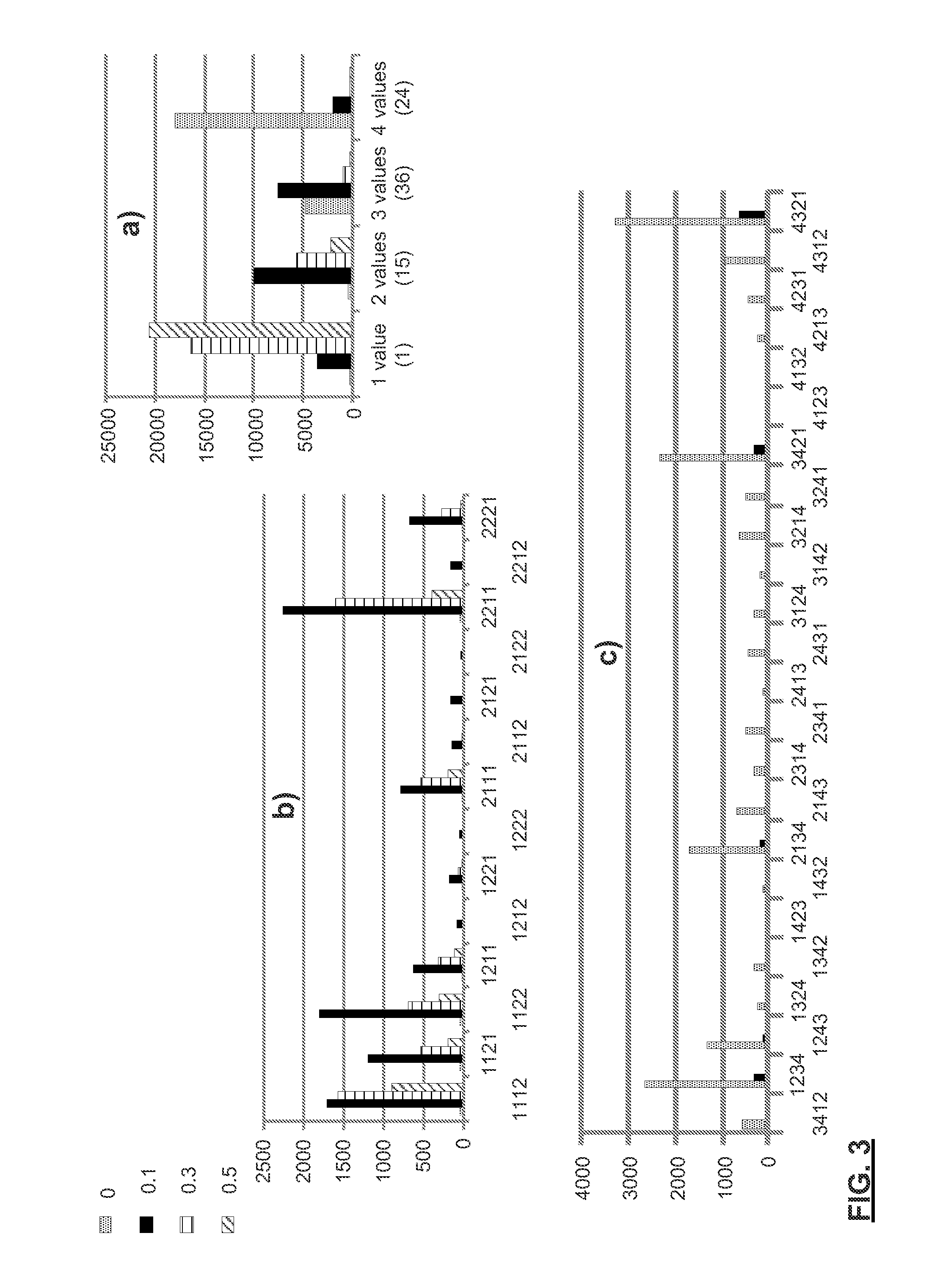Order-preserving clustering data analysis system and method
a data analysis and order-preserving technology, applied in the field of data analysis and data mining, can solve problems such as noise in changes, and achieve the effects of reducing noise, flexible and effective, and facilitating comparison of large sets of data
- Summary
- Abstract
- Description
- Claims
- Application Information
AI Technical Summary
Benefits of technology
Problems solved by technology
Method used
Image
Examples
examples
[0044]An example of the present invention is provided for use in gene-sample-time, short time series datasets. A 3D microarray gene expression dataset or gene-sample-time (GST) microarray dataset is a real-valued N×M×L matrix is provided, representing set of N genes G={g1, . . . gn, . . . gN}, a set of M biological samples S={s1, . . . , sm, . . . , sM}, and a series of L time points T={t1, . . . , tl . . . , tL}. Typically 1010>N>104, 10>M>1, and 20>L>3. Each cell anmi in the matrix derives from an observed measurement of expression level of gene gn in sample sm at time (or under the conditions associated with) tl. This 3D microarray dataset is referred to as: A=(G, S, T). The expression level of gene gn in sample sm across the time points (sequence) is denoted: fnm(t), which is a row vector. The expression level of a gene gn in all the samples, across all time points fn(s,t), is another name for the matrix A. Thus the 3D gene expression matrix can be viewed as a set of 2D matrices...
PUM
 Login to View More
Login to View More Abstract
Description
Claims
Application Information
 Login to View More
Login to View More - R&D
- Intellectual Property
- Life Sciences
- Materials
- Tech Scout
- Unparalleled Data Quality
- Higher Quality Content
- 60% Fewer Hallucinations
Browse by: Latest US Patents, China's latest patents, Technical Efficacy Thesaurus, Application Domain, Technology Topic, Popular Technical Reports.
© 2025 PatSnap. All rights reserved.Legal|Privacy policy|Modern Slavery Act Transparency Statement|Sitemap|About US| Contact US: help@patsnap.com



